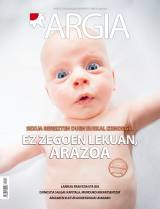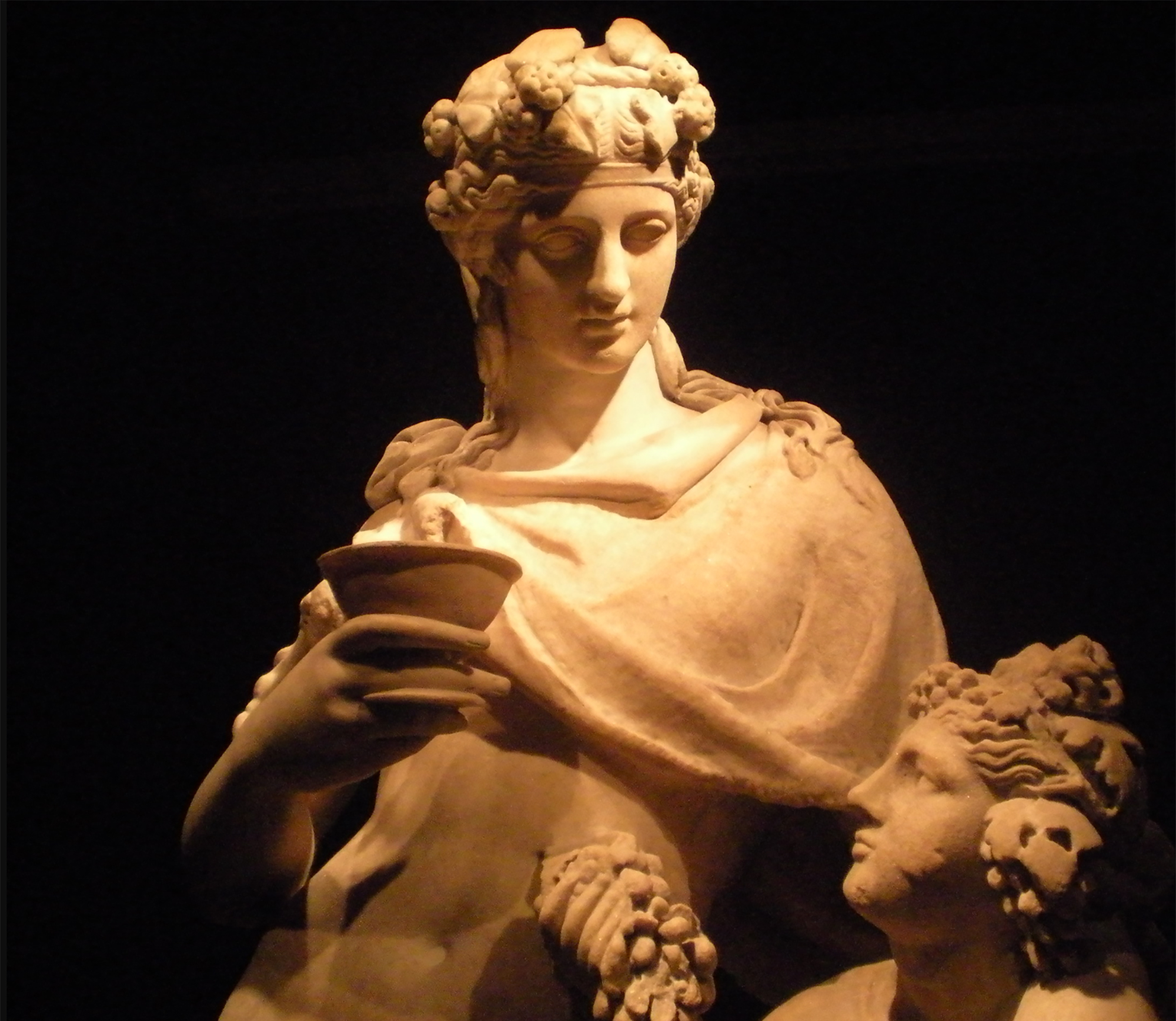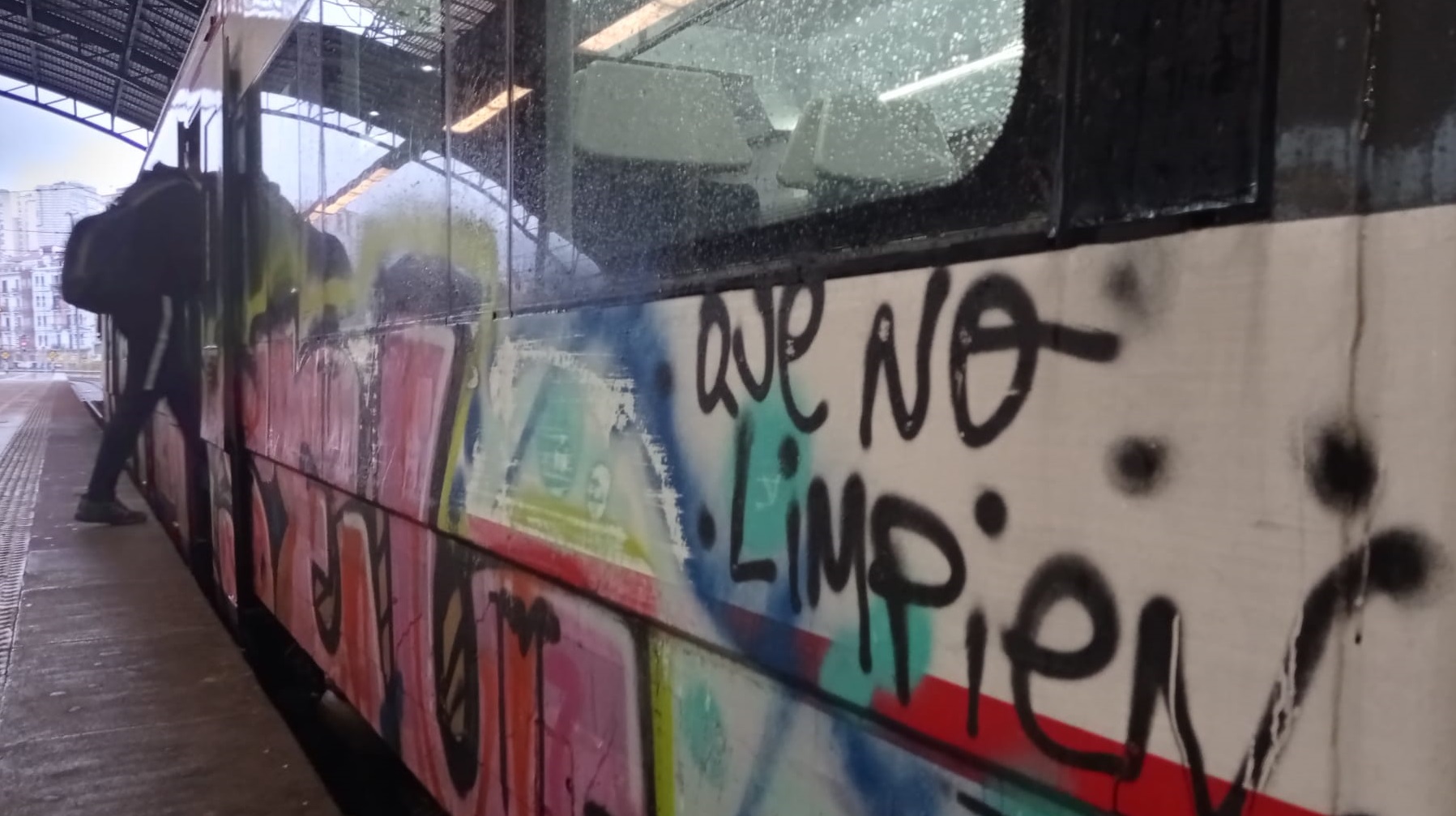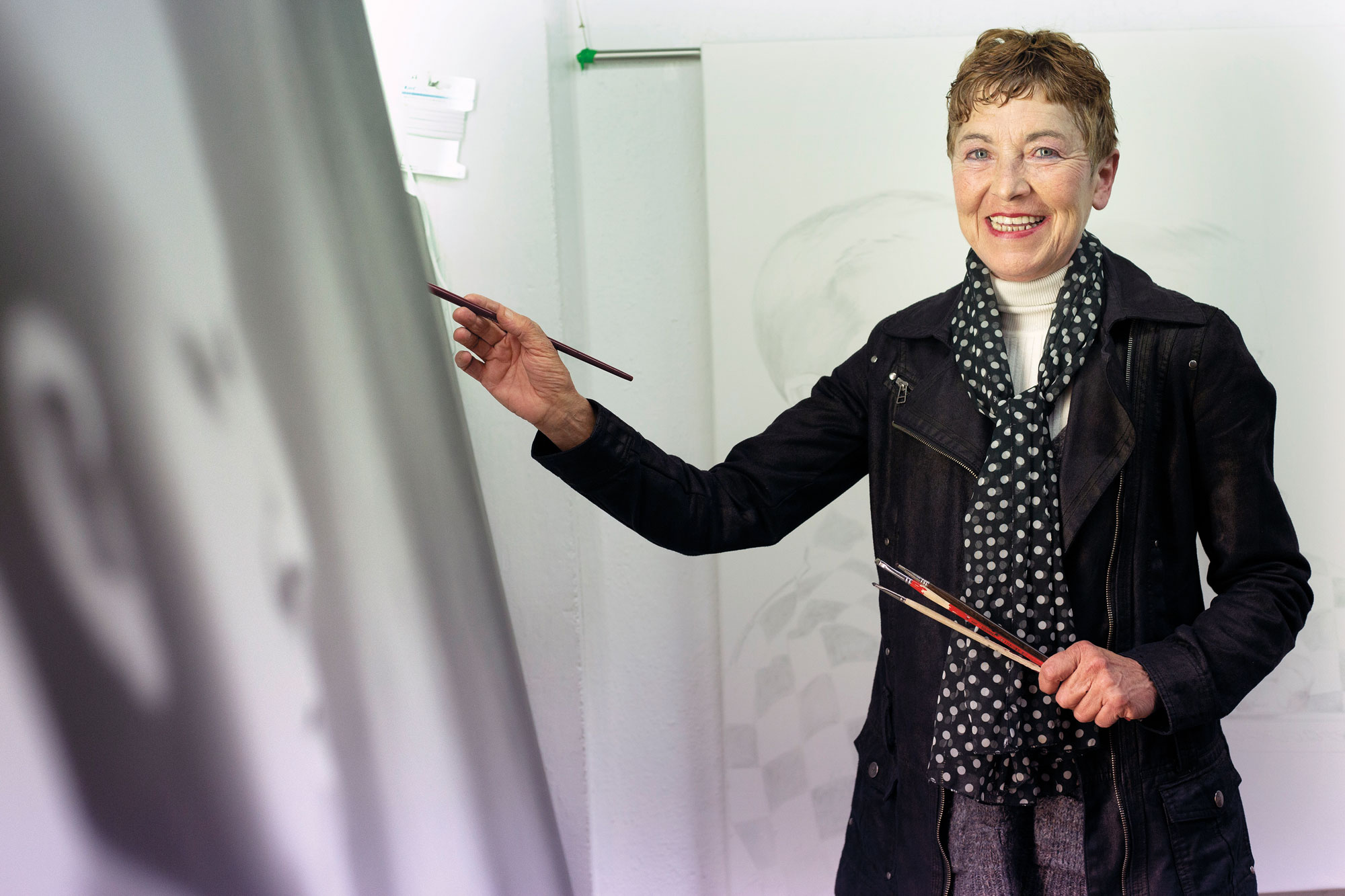"Here's no substrate for creating artists."
- Four young women are the new directors of the Huarte Centro de Arte Contemporáneo de Huarte, four of them with difficulties in various artistic fields. The executive management will be carried out by Oskia Ugarte. The change from exhibition centre to production centre starts this summer.
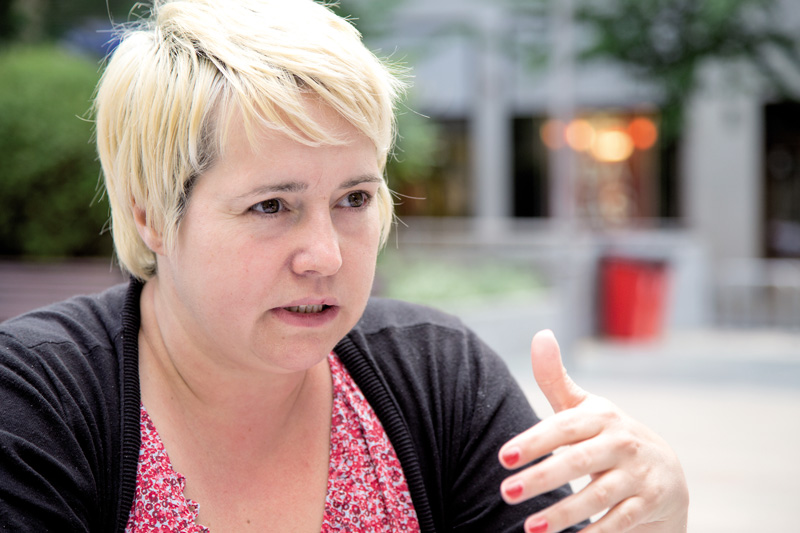
Why Art History?
When I was studying UBI, a professor proposed to me to study Art History, seeing that that world I liked. I accepted the idea and went to Vitoria. I loved the career. I still thank the professor for his recommendation.
Nice subjects, but a difficult career to find a job?
A lot. You see a black future when you reach the fourth level. It has no great solutions and also what can be more practical, that is, there are no specialties in Vitoria-Gasteiz to dedicate itself to the world of museums or artistic management.
What was your first job?Before finishing
college, I started at the Museum of Roncesvalles. We carried out the didactic work and guided tours and the manager and I, on our own, began to make the inventory of the Collegiate heritage. They have an important collection of medieval parts: What is known as the chess game of Charlemagne, the Romanesque skins of a gospel and the Gothic image of great value of the Virgin, among others.
He was at the Oteiza Museum between 2007 and 2013. How did you get there?
Every day he would walk by Roncesvalles and he was clear that he wanted to work there. So one day I walked in and left my resume. Soon after they called me to work in the didactics section. At first, after conducting guided tours, workshops and school groups, I immediately set out to coordinate the exhibitions with the deputy director and director of the communication department Juan Pablo Ori. The congress on Oteiza, for example, we run it together.
Didactics is very vocational, and the people who work it do a great job, because working with children or groups fatigue you a lot, but I am clear that what I love the most is management.
The coordination of the group working on an exhibition is, in my view, the most beautiful work. I also worked in the gallery Moses Pérez de Albéniz in the coordination of several exhibitions, but now they have had to close the room in Pamplona due to the crisis.
Was it from Oteiza?
I've worked at the Oteiza Museum with Oteiza. If you don't know his work and what he has written, if you don't understand that he was an integral artist, it's hard to enjoy his works. Oteiza makes you change the conception of art. If you thought you had to enjoy art on your own, you're upset by that idea. You don't have to enjoy it because it's art, art forces you to do a job inside you and you enjoy it. Enjoyment does not come from seeing the work of art, but from the ideas and sensations that it produces you.
Is that the key to understanding art, especially contemporary art?
Yes. We should not learn the images of classical or figurative art. They're part of our imagination that's passed down from generation to generation. Contemporary art, on the other hand, is what it's doing today and it forces us to rethink many things.
How do you know if what you have in front of you is a work of art or not?
I don't know! It's really hard to say what art is and what not, or what art will be in 20 years' time, or how they're going to take what we're producing now. I do not think we should waste our time on that.
But those of you who are in these centers will need some
criteria… Yes, that is, only some criteria, and more and more open. Painting, sculpture and, in general, the classification of disciplines must be disqualified, because today many forms of expression have been created. The more you accept, the richer we will be.
What will the new Huarte Contemporary Art Center look like?
Huarte's center is often called a museum, but that's not right, because it doesn't have its own collection, so it's not in the museum network. Our goal is not that, but to make a production centre. We took as a reference centers like Arteleku and Medialab-Prado.
We want to internalize the time of production, not just look at the result. We want to open the point of view. The most important thing is the process that takes place. What is more, not all initiatives have to end up in a work of art.
What is your first objective?
We now want to open the center, get to know the art community and let them know the center. To think about what we have and what we want to do, and for that we need peace of mind, not to get people to work immediately. On the other hand, we want to offer work spaces to artists. It is a call that will be open all year round.
We want a permeable center. The artistic community does not dare to enter the center of Huarte. Furthermore, we do not have a habit. There's no substrate for creating artists here. In Navarra we only have the School of Arts and Crafts, and that is also totally academic. It's very superficial. In private initiatives, a few interesting places have been created such as Jazar or the recent disappearance of Dormitaleria 54, but there is a very modest movement, because it is very difficult to maintain it. Artists need money to move in this kind of private initiative, so we believe that public institutions need to guarantee it. For example, we want to distribute the prizes of young artists every year, but getting these kinds of artists is very difficult if they are not given the opportunity to train and work. We think we have to start out there. Similarly, artists are often asked to make exhibitions free of charge. That is impossible. Authors, at least, have to be paid a fee, how else can they live? We want to combat precariousness.
What will be the first steps?
In August we will put forward our first initiative: The canicle. The key is to do nothing. We propose artists to come and do nothing. The things that are created in those moments that are not for production can be very interesting. We attach great importance to food. The things that happen around the table are very special. They are not repeated anywhere and we want to take advantage of them.
We also want to rethink the spaces that the center of Huarte needs. We want to make an architecture lab to condition the space and turn it into a production center. All of us, workers, artists and citizens, are going to say what space we want.
We also want to open the documentation centre as soon as possible. We'd like to add more material to the background that's in the center, for example, everything about contemporary art that's taken out of public libraries through cleaning.
What will your management model look like?
We're a group. If the ways of working are becoming more and more horizontal, we want to put this idea as a model. Attention in relations is very important to us and we believe that the strength of our project lies in transversality. A group of women, in addition. For us, the feminist perspective is very important. And three out of four of us are Basques. We also attach particular importance to the Basque language and culture.
How will you distribute the work among the four directors?
I'm an CEO, others are CEOs. The head of Education will be Betisa San Millán, Nerea de Diego for the visual arts and Elisa Arteta will take care of everything around the body and mind. I will be the only one with complete dedication and the others will be back and forth, each working in its usual environment. The idea is to enrich the center with things that happen overseas and be in close relationship with the real world, artists. We want to make the institution permeable.
It will be up to you to take care of the money. What is the budget?
Gurea is a private foundation in which the Government of Navarra, the Town Hall of Huarte and renowned personalities in the cultural field participate. The Department of Culture of the Government allocates around EUR 350,000 per year. From there we have to look for other sources of funding, public or private. It's very difficult. Money for art never exists, however, it is a job that needs to be done, and there too, creativity has a great deal of weight. In the United States, for example, patronage is very frequent. In our case, as we have worked very well with public money, we haven't thought about it, but it's time to move.
What is art for?
Art makes us more critical. It reminds us of things that we had never thought about or questions the ideas that we had previously established. It's a tool that helps us spread thought.
Are we, to some extent, all art creators?
Only in part. We're not all artists. Creativity is not the same as art. Creativity seems to have an improvised tone, and art isn't that. Art is not creativity, it's work. As Picasso said, “Let inspiration get me working.” You cannot do a good piece of art without insisting and devoting hours and hours to it. It is clear that we cannot all be artists. For example, I find it very nice to grow the wood, but if I am not able to do so, I will do nothing particularly good, even if I do it all my life.
Some people think that anybody can make art, and that's not true. These are the ones who come to the exhibition and say that their four-year-old makes these pictures every day. On several occasions they have included in the fair Arco paintings made by children to, for example, reinforce this type of ideas. There are scams and stupidity in every field of the world, and the art world is not left behind either. I would tell people of this kind to come to the island and talk to artists and mediators, and to know firsthand how we work. If you want them to say that it is not worth a quarter and a debate will open, and we will certainly then be more critical. When it comes to defining contemporary art, we have to look at the process and not at the outcome.
Why does it happen? Because in this society we all have to be young, always joyful and always creative?
Yes, and now another concept is very fashionable: we have to be entrepreneurs both in the company and in the arte.El art and decor mix to menudo.En the
Oteiza Museum asked a family some pieces for an exhibition and told us no, they had guests at home and without those works the salon would be empty. The people who act in this way must be clear that works of art are bought with money, but that those works are also being held accountable. Art is not just the one who bought it.
If a supposed work doesn't move you inside, isn't it a work of art?Before you see the work you
have to do a job to know what you're going to see or hear. You can't put yourself in front of a work and say: “Delude me.” You have to read it, you have to think, and then that moment of deciphering can happen to live. Contemporary art demands work from both the artist and the viewer. In conceptual art, for example, special work needs to be done. The hardest thing is what you deserve the most. The pay you get when you understand a conceptual work is much higher. It's more than a pleasure. Bring about a change in your concepts.
How do we walk in Euskal Herria?There are
many artists, but you have to take care of them, listen to their passions and make the way easier, otherwise you cannot move forward. We need to create new opportunities.
Do we Basques have a special view of art?
Since nationalism, several groups of artists have been driven to maintain links between styles. Now is not the best time to show these characteristics of their own, because everything is further diluted, but there is still something in common among many artists who are in the Basque Country.
Artearen Historian lizentziaduna EHUn. Orreagako Museoan, eta sei urtez Oteizarenean lanean aritu ondoren, berak beste hiru emakumerekin batera aurkeztutako proiektua hamalauren artean aukeratua izan da Uharteko Arte Garaikidearen Zentroa kudeatzeko.
“Euskal kulturan sortzen diren proiektuen sustatzaile izan nahi dugu. Kontua ez da soilik tokia uztea, baizik eta proposamen berriak bilatzea eta bultzatzea. Gauza oso bereziak gertatzen ari dira euskal kulturan, baina tokia behar dute ahalik eta gehien garatzeko. Bertsolaritzan, esate baterako, ikaragarria da zer garapen lortzen ari diren eta zer nolako proiektuak sortzen ari diren hizkuntza eta bertsoen inguruan”.
Eskultura grekoerromatarrek bere garaian zuten itxurak ez du zerikusirik gaurkoarekin. Erabilitako materiala ez zuten bistan uzten. Orain badakigu kolore biziz margotzen zituztela eta jantziak eta apaingarriak ere eransten zizkietela. Bada, Cecilie Brøns Harvard... [+]
Behin batean, gazterik, gidoi nagusia betetzea egokitu zitzaion. Elbira Zipitriaren ikasle izanak, ikastolen mugimendu berriarekin bat egin zuen. Irakasle izan zen artisau baino lehen. Gero, eskulturgile. Egun, musika jotzen du, bere gogoz eta bere buruarentzat. Eta beti, eta 35... [+]
This text comes two years later, but the calamities of drunks are like this. A surprising surprise happened in San Fermín Txikito: I met Maite Ciganda Azcarate, an art restorer and friend of a friend. That night he told me that he had been arranging two figures that could be... [+]
On Monday afternoon, I had already planned two documentaries carried out in the Basque Country. I am not particularly fond of documentaries, but Zinemaldia is often a good opportunity to set aside habits and traditions. I decided on the Pello Gutierrez Peñalba Replica a week... [+]









